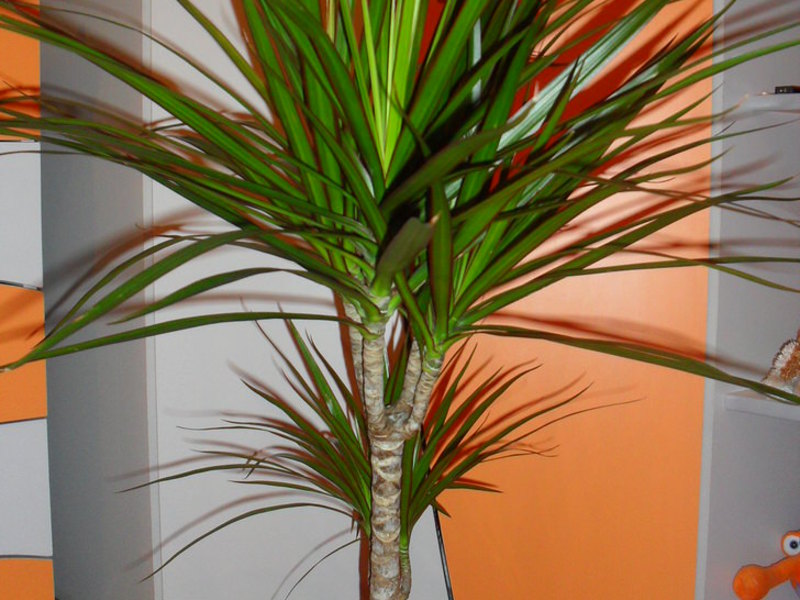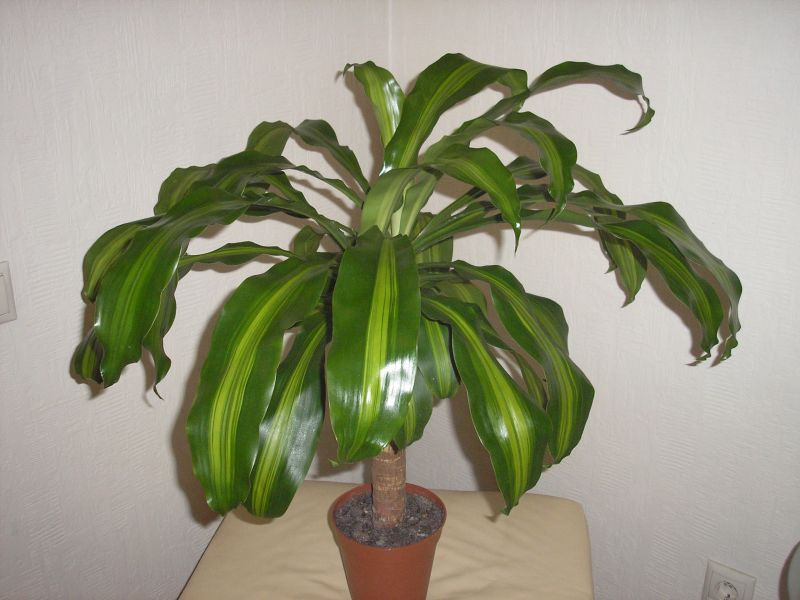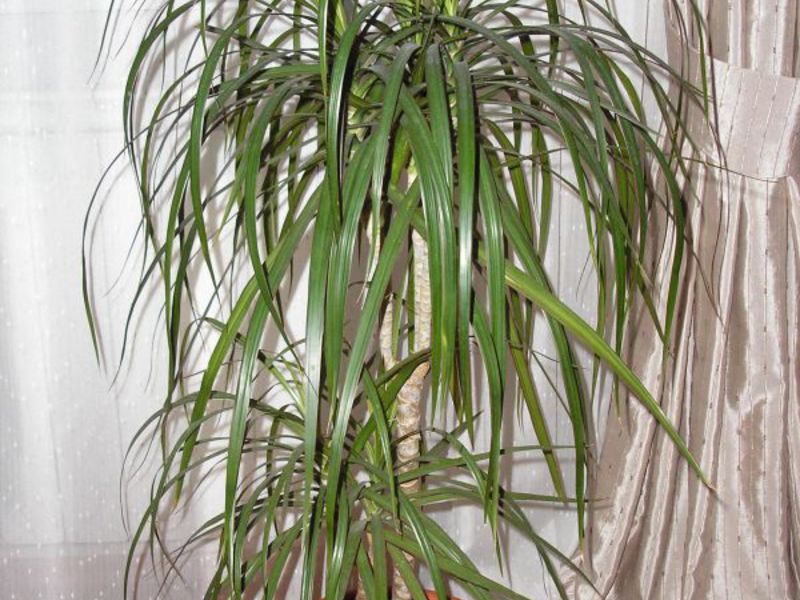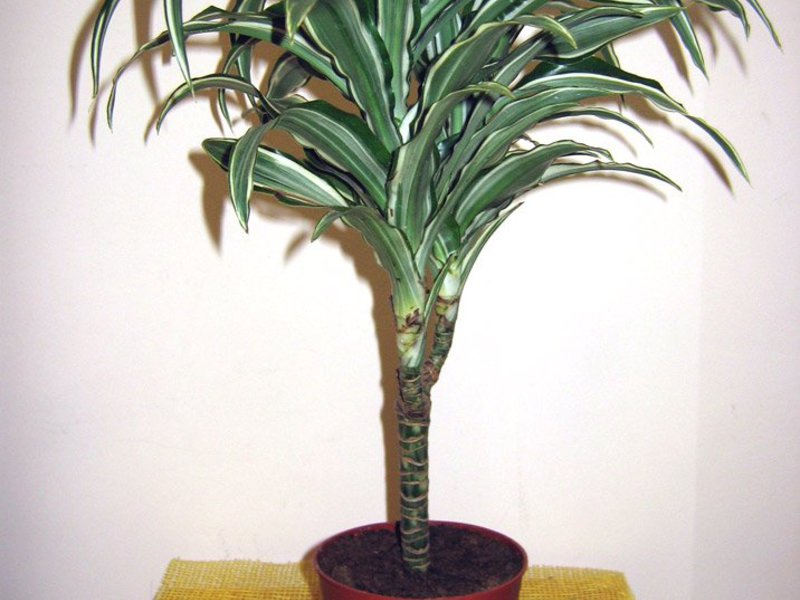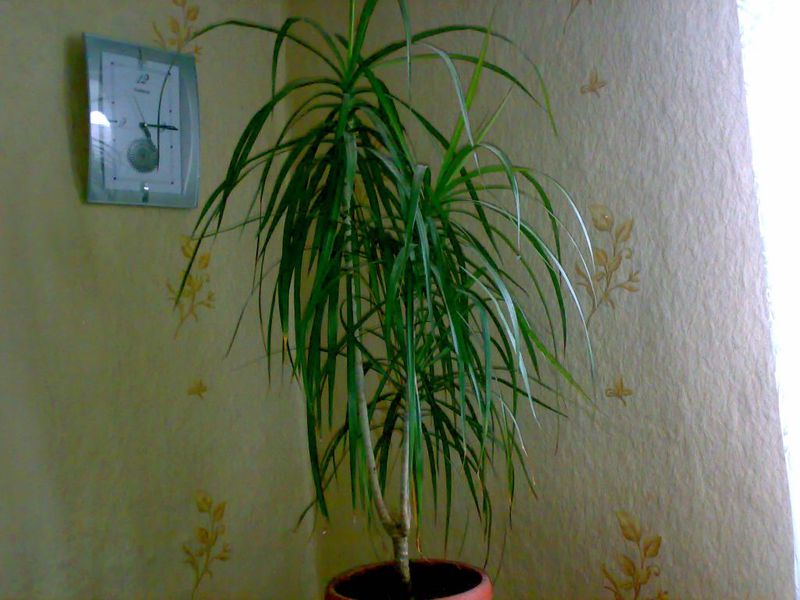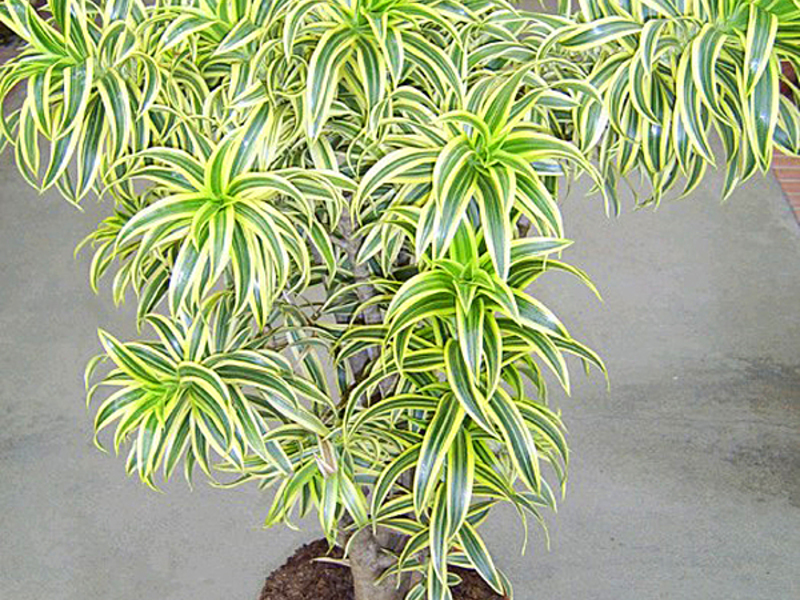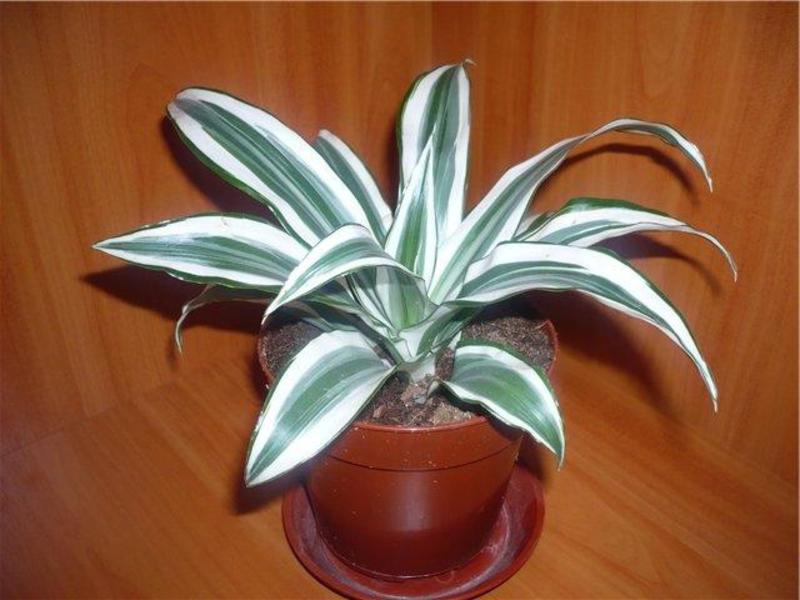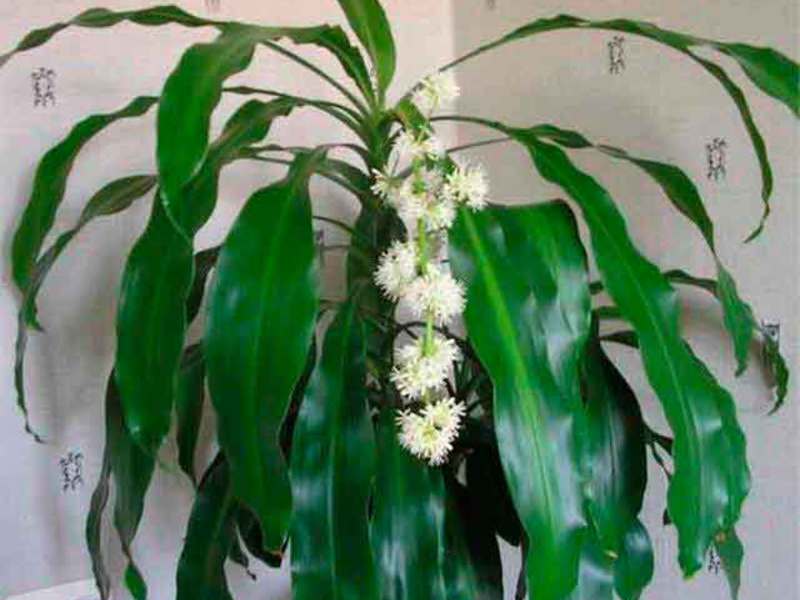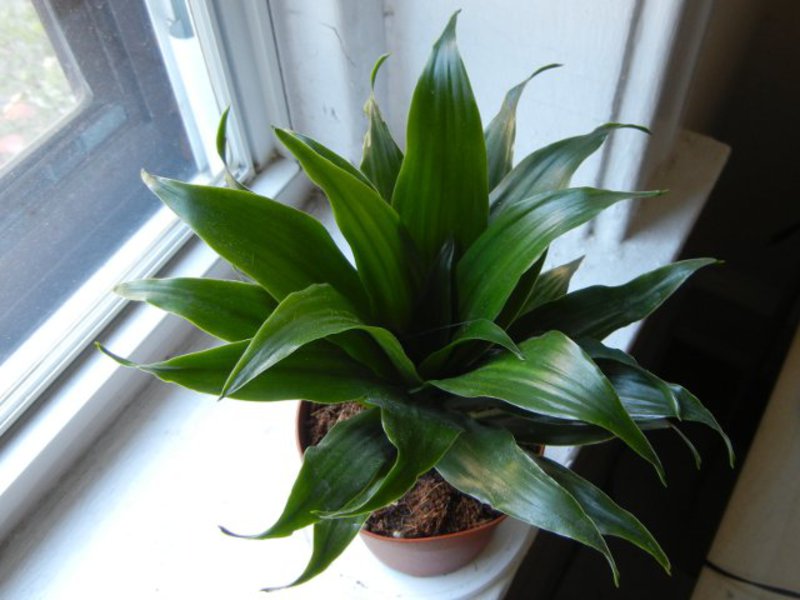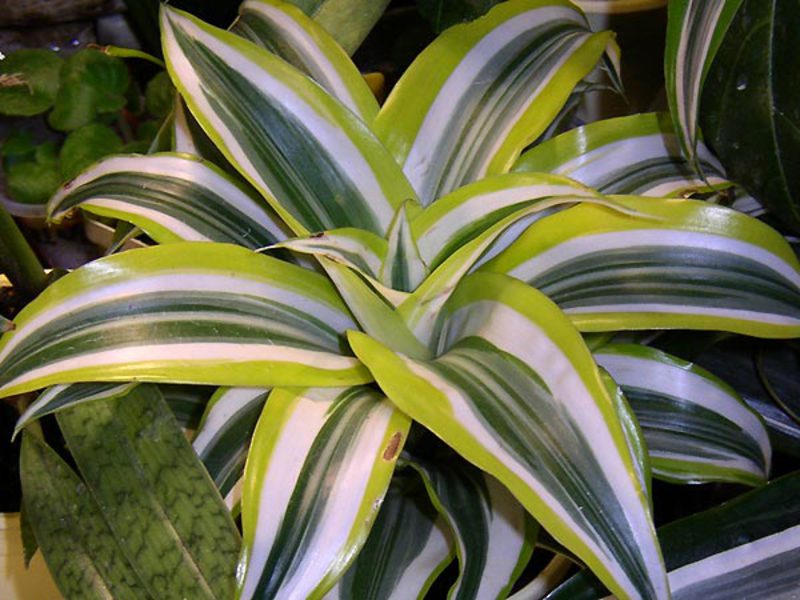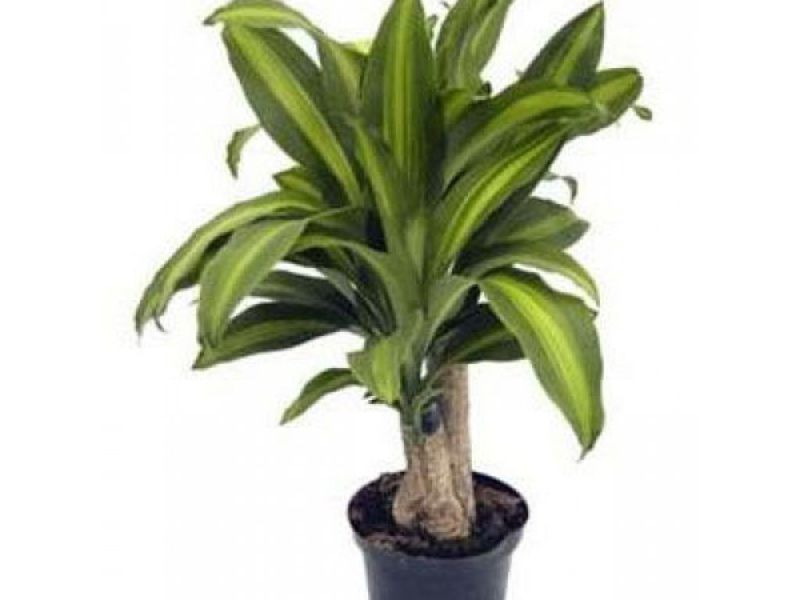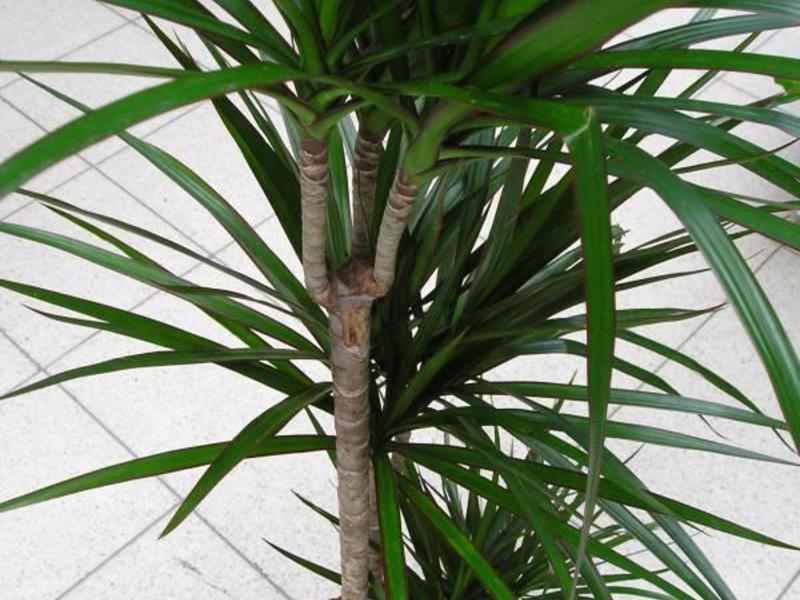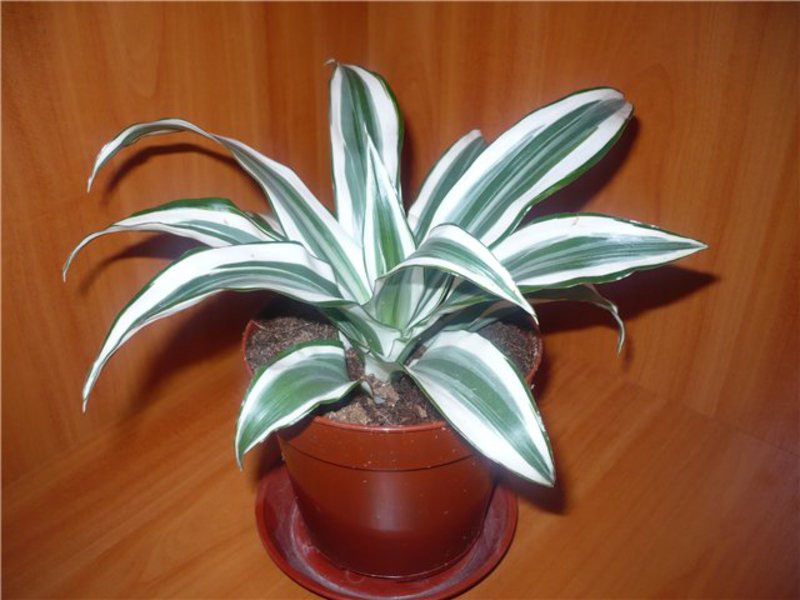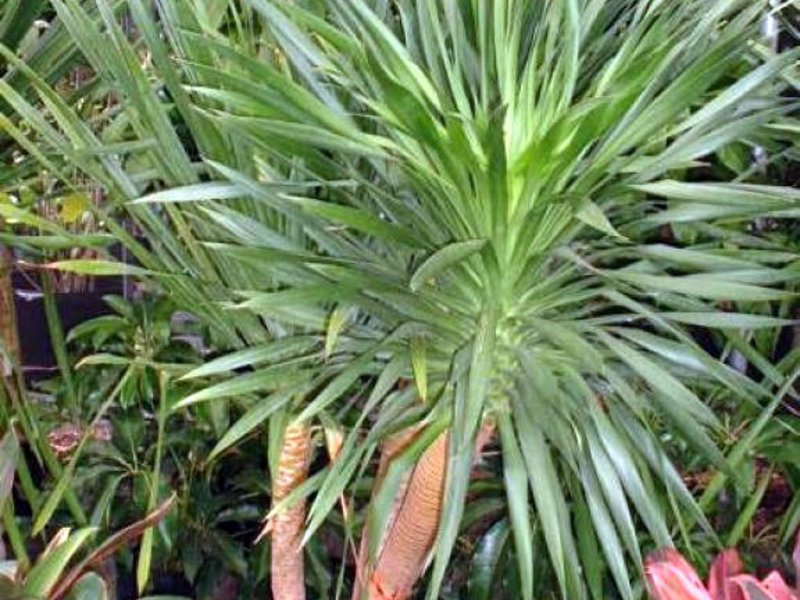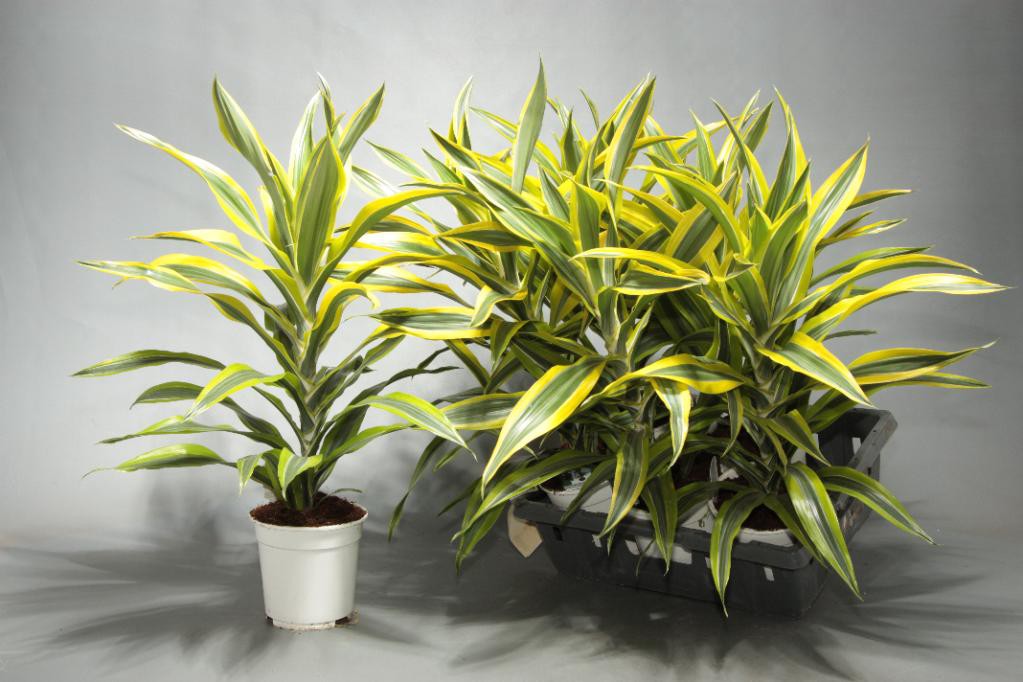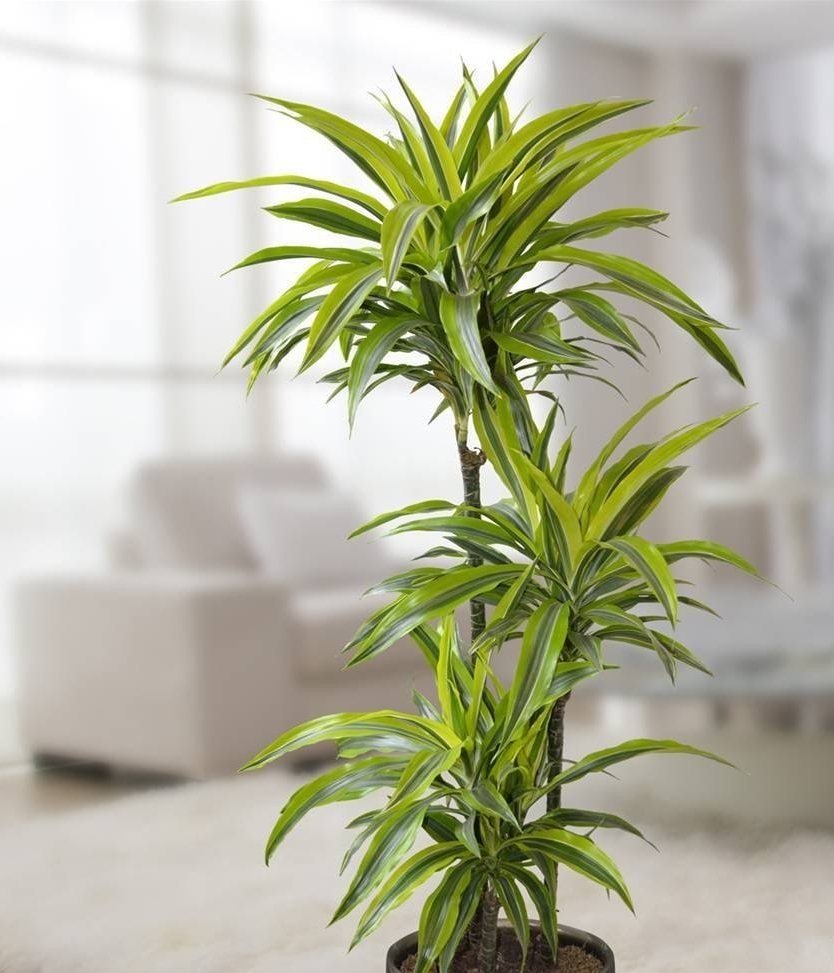In the collections of florists, indoor trees with erect trunks and thin falling leaves of different widths and colors are very often found. This evergreen plant is called dracaena. Due to their originality and unpretentiousness, dracaena are very popular, and are used to decorate not only apartments, but also offices and shopping centers.
The plant has more than 60 species, which differ in the length or width of the trunk, color and size of the leaves. Some of them grow and reproduce well at home.
Content
Indoor dracaena - general description, photo
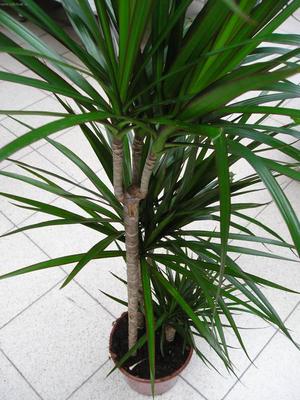 The plant of the Dracaenaceae family grows in natural conditions in the tropical and subtropical zones of Asia, Africa, and Europe. Dracaena trees are among the most durable trees in the world and are often confused with cordilins or yuccas. However, unlike these trees, dracaena roots have an orange tint.
The plant of the Dracaenaceae family grows in natural conditions in the tropical and subtropical zones of Asia, Africa, and Europe. Dracaena trees are among the most durable trees in the world and are often confused with cordilins or yuccas. However, unlike these trees, dracaena roots have an orange tint.
In natural conditions, the shrub grows quite quickly and surprises with the flowering and beauty of its leaves, varied in width and color. At home, it practically does not bloom and have a green mass of leaves only at the top of the stem. The nature of the plant is such that over time, old leaves begin to fall off. There is no need to be afraid of this, but the alarm should be sounded if the tree begins to shed its leaves in large quantities and abruptly.
What to do if dracaena leaves dry and turn yellow sharply:https://flowers.bigbadmole.com/en/dikorastuschie-rasteniya/dracena/pochemu-u-dracen-sohnut-i-zhelteyut-konchiki-listev-chto-delat.html
Varieties of dracaena with photo and name
Dracaena deremskaya. Under natural conditions, a tree can reach a height of 4-5 meters. Its narrow, dark green lanceolate leaves can be up to 1.5 m long. Young leaves grow upward, but with age they begin to droop. Different varieties of dracaena deremskoy differ in color and shape of leaves:
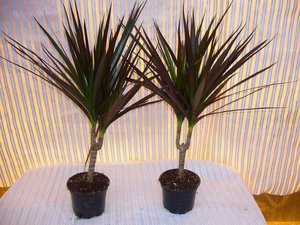 Shriveriana has a wide yellow-white border that runs along the edge of the leaf blade.
Shriveriana has a wide yellow-white border that runs along the edge of the leaf blade.- Bausei is a plant with a wide white stripe in the middle of the leaf.
- Warneckii is a shrub with gray-green leaves with narrow white stripes along the edge.
When dying off, the leaves of dracaena derem leave characteristic marks.
Dracaena is fragrant. The tree got its name due to the pleasant smell emanating from its flowers. However, at home, it does not bloom, but it has beautiful leaves, the width of which can reach 10 cm. The tree is impressive in size and has a thick, unstable trunk that requires support. The following varieties are popular:
- Lindenii is a broad-leaved tree with creamy white stripes at the edges.
- Lemon Lime is a fast growing plant with a thin stem.
- Compacta is a tall, palm-like plant with dark green leaves.
- The Victoriae cultivar is overgrown with light yellow leaf blades, in the middle of which there is a green stripe.
- Massangeana is a tree with large arched leaves up to one and a half meters long.At the top of the lignified stem, they are collected in a bunch. The leaf plate has a light green color and a yellow stripe in the middle.
Dracaena bordered or Marginata. The most popular type, which is often used in the design of various premises. Differs in height up to 3 meters and pointed leaves up to 70 cm long. Dark green leaf plates may have a reddish-brown edge or yellow dividing strip.
Instructions for growing dracaena at home:https://flowers.bigbadmole.com/en/dikorastuschie-rasteniya/dracena/cvetok-dracena-vyraschivanie-v-domashnih-usloviyah-i-foto.html
Dracaena canary go dragon tree... It grows in the Canary Islands and in western Africa, where it reaches a height of 10 meters. At home, the height of the tree is no more than one and a half meters. Leaves 60 cm long are bluish in color and sharp thorns at the end. In the presence of good lighting, the edge of the dragon tree's leaf plate takes on a reddish tint.
Dracaena is screen-bearing. A tree with a short trunk, at the top of which there are arched lanceolate leaves up to 4 cm wide and up to one meter long.
Dracaena Sander. The species is a short plant with a thin trunk. The dark green leaves with silvery stripes are 20 cm long and lanceolate.
Dracaena shoots... An evergreen shrub up to 3 meters high is distinguished by a large number of branches, the thickness of which is slightly more than a centimeter. Green leaves with yellow spots 8 to 16 cm long grow in whorls. Their pointed, elongated top has a triangular shape. White-greenish inflorescences grow at the top.
Dracaena unbent. A tall tree up to 5 meters in length can have several thin trunks. Leathery to the touch, lanceolate leaves reach 15 cm in length, are green and have veins on both sides. In the middle part, the width of each leaf plate is up to 2.5 cm.
Dracaena is tree-like. Under natural conditions, the height of the tree reaches 12 cm.The green leaves of a belt-like shape are distinguished by veins, 1.5 m long and up to 8 cm wide.
Dracaena capitate... A tree with oval-shaped leaves up to 12 cm wide and about 10 cm long. Light green shiny leaf plates from below, from above have a dark green tint and whitish spots. The leaf petioles are not long, the ends are sharp.
Dracaena Golden. A small bush with a short and thin trunk is very fond of warm rooms and high humidity. Leaves tapering to the top, up to 20 cm long, have a white-cream shade. On both sides, the dense leaf blade is covered with transverse dark green stripes.
Dracaena Godzeff... A low branching shrub with shiny leathery oval leaves. Leaf plates up to 10 cm long have a green tint and white spots. Some varieties have leaves that look like leaves dieffenbachia... It blooms with greenish-yellow flowers with a pleasant aroma.
Dracaena aletrimis. The plant has several more names - Cordilina Rumph, Dracaena Hooker, Dracaena Rumph. A tree two meters high has sessile, leathery to the touch lanceolate-xiphoid leaves up to 80 cm long.Slightly wavy leaf plates are distinguished by white edges, a narrow base, a midrib and a width of 5 cm.
Dracaena care at home
In order for a flower to grow beautiful and healthy, you should know all the nuances of its care and strictly observe them. The most unpretentious among dracaena is the dragon tree, dracaena deremskaya and bordered. All of them relatively shade-tolerant and do not require a special watering schedule.
Lighting and temperature control
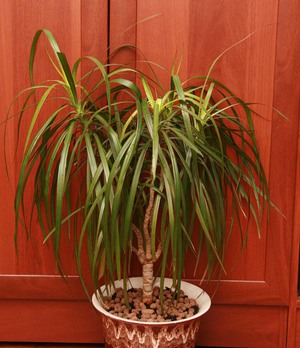 Most plants prefer warm rooms without drafts. Throughout the year, the temperature in the room should not fall below +16 degrees. A drop in temperatures up to +10 degrees and their sudden changes can lead to the death of a tree.
Most plants prefer warm rooms without drafts. Throughout the year, the temperature in the room should not fall below +16 degrees. A drop in temperatures up to +10 degrees and their sudden changes can lead to the death of a tree.
Dracaena with dark leaves are undemanding to light and grow well in diffused lighting.Plants with light and colored leaves need more sun. But in any case, any kind of dracaena must be protected from direct sunlight. The optimal placement of these trees is in the back of the bright room opposite the window.
Watering and humidity
Moisture and frequency of watering are the main criteria for care and depends on the type of plant. Marginata and deremskuyu dracaena cannot be strongly moisturized. Otherwise, leaves will begin to fall off them. The soil under the dracaena Sandera should be moist all the time. In any case, completely earthen food should not dry out under any plant.
To eliminate root decay, trees can water less often and spray more often... Also, 30 minutes after watering, the accumulated water from the pan must be poured out.
Only Dracaena Canary and Gorzefa are favorable to dry indoor air. The rest of the species prefer high humidity. For this, the leaves of the trees are sprayed daily. In the hot season and with the radiators turned on, spraying is carried out two to three times a day. Especially carefully it is necessary to spray the dracaena deremskaya. It is necessary to ensure that water does not accumulate in her leaf sinuses. From time to time, the leaves are wiped with a damp cloth.
Transplant and feeding
Young plants are transplanted annually into pots, the diameter of which should be 3 cm larger than the previous ones. From the age of five, the trees practically stop growing, so they are replanted only when the roots completely fill the pot.
To mix the soil, take in equal parts:
- peat land;
- turf;
- leafy ground;
- peat;
- humus;
- sand.
After transplanting a tree into a nutrient mixture, caring for it consists only in watering and spraying. For several months it can not be fed. Later, during the period of active growth, dracaena are fed every two weeks with complex fertilizers for indoor plants. In this case, you can not use fertilizing with fluoride. An excess of this mineral can lead to dry leaf tips, the formation of yellow spots, and leaf fall.
Reproduction of dracaena
Evergreens can be propagated in two ways:
- A piece of stem.
- By cuttings.
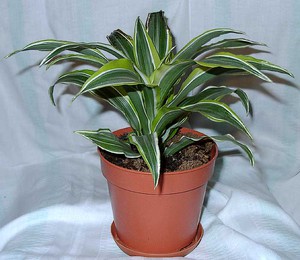 With the first breeding method, it is simply cut off a piece of stem at least 5 cm long... It needs to be dried a little and stuck in a small pot filled with an earthen mixture. After the roots and lateral shoot appear, the plant is transplanted.
With the first breeding method, it is simply cut off a piece of stem at least 5 cm long... It needs to be dried a little and stuck in a small pot filled with an earthen mixture. After the roots and lateral shoot appear, the plant is transplanted.
Cuttings are taken from the top of the stem. They stick into the soil and cover themselves with a jar. They should be sprayed from time to time. The roots should appear in about a month.
How to propagate dracaena using stem cuttings:https://flowers.bigbadmole.com/en/dikorastuschie-rasteniya/dracena/kak-uhazhivat-i-razmnozhit-dracenu-v-domashnih-usloviyah.html
Having familiarized yourself with the types of dracaena and having studied the recommendations for their care, you can easily choose a spectacular evergreen plant with beautiful leaves for decorating your apartment or office. Various types of dracaena will look good with dieffenbachia, yucca, ficus and other tall trees.
